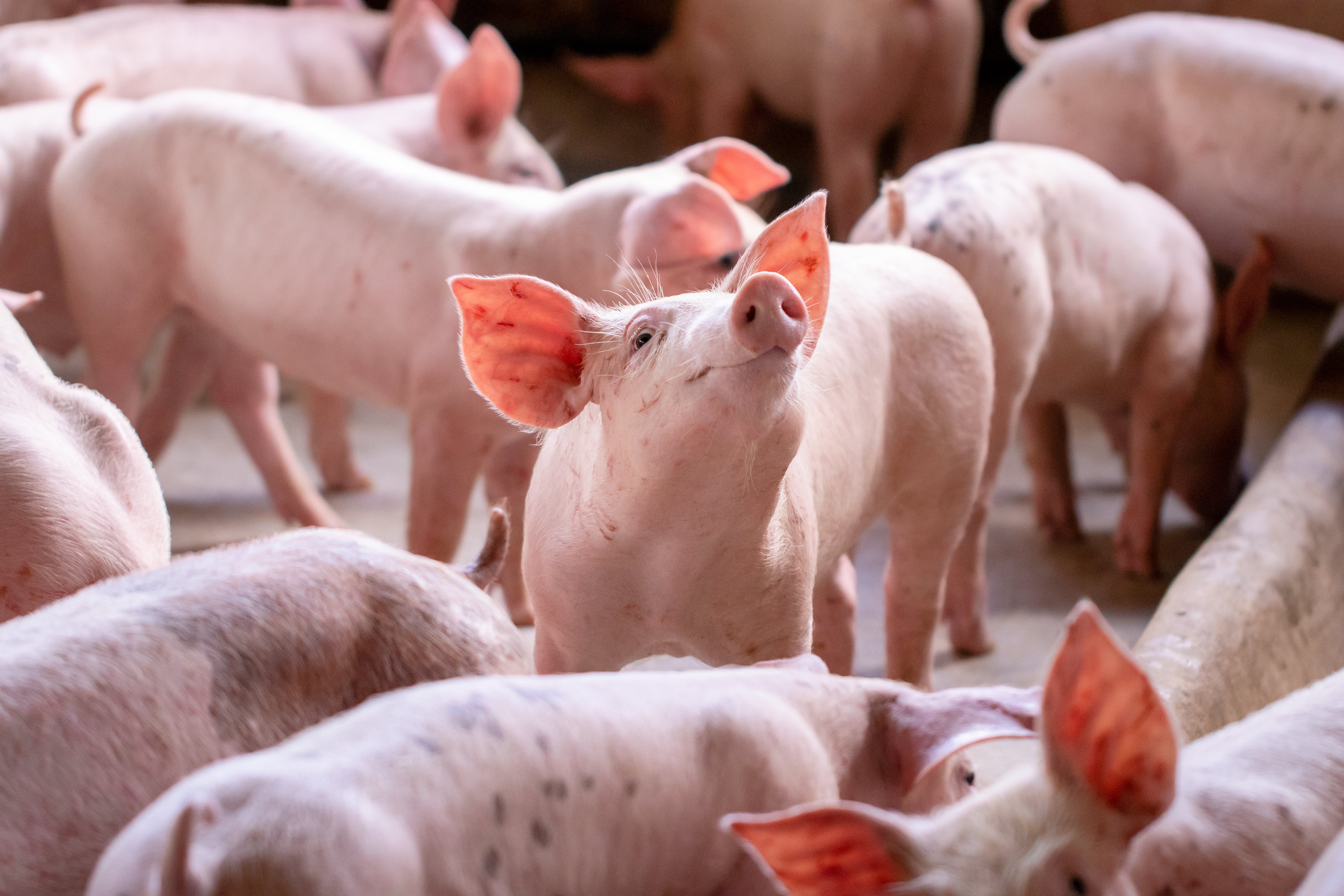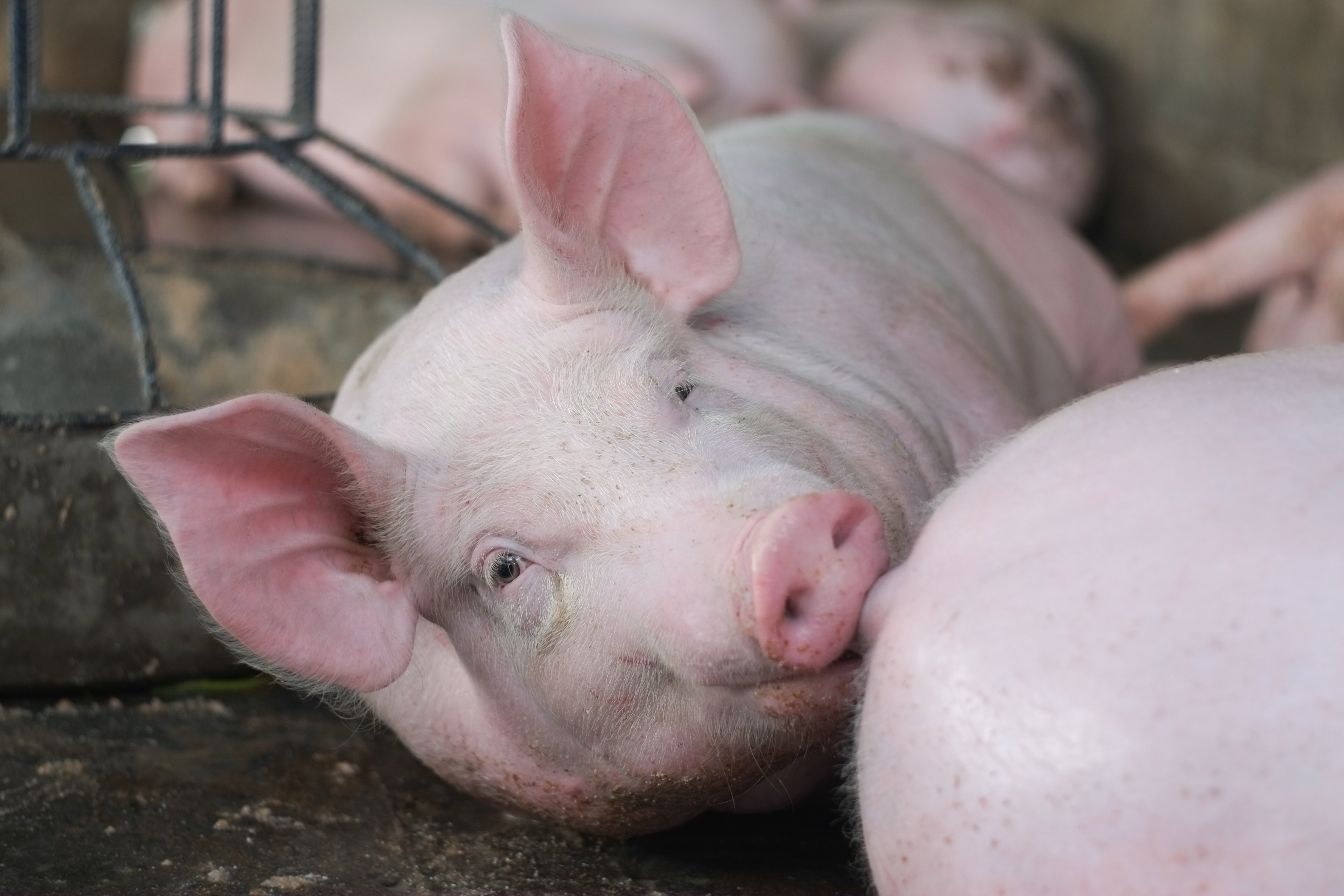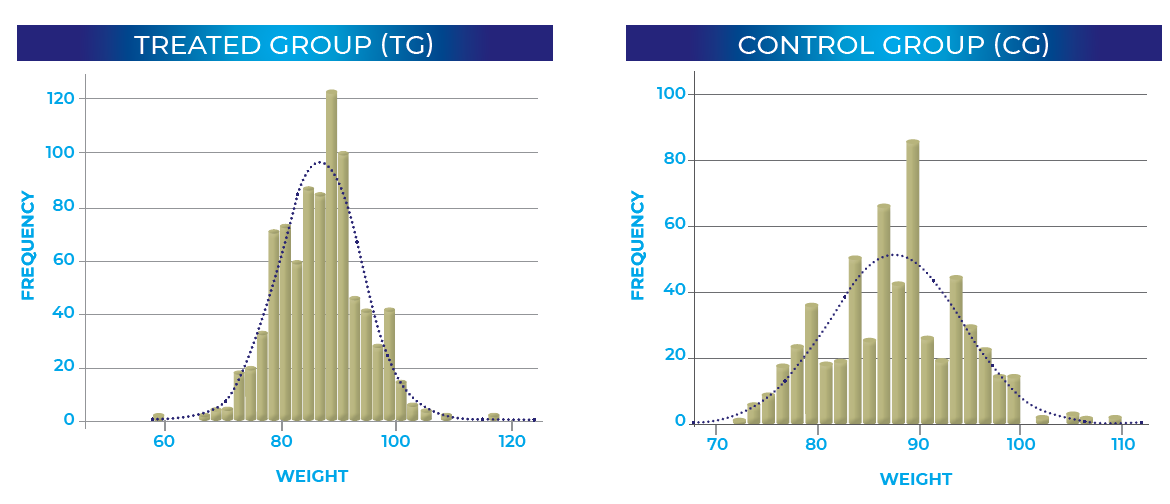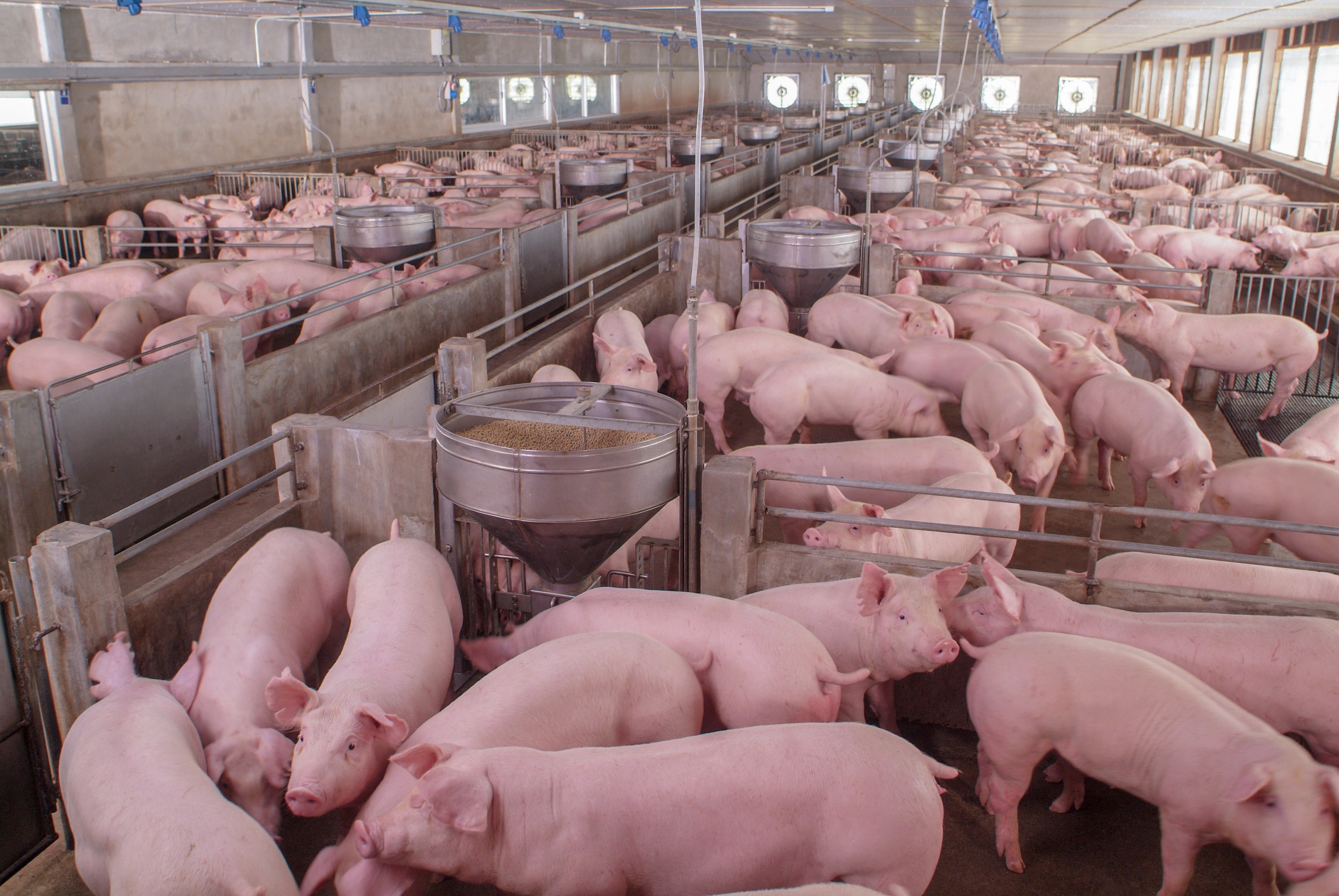Porcine Respiratory Disease Complex (PRDC) develops as a clinical manifestation of respiratory pathogen coinfections in growing-to-finishing pigs. Multiple primary viral and bacterial microorganisms, such as Mycoplasma hyopneumoniae (M. hyo), viruses like porcine circovirus type 2 (PCV2), porcine reproductive and respiratory syndrome virus (PRSSV) and swine influenza virus (SIV) are most frequently found. Other viral pathogens - Aujeszky’s disease virus (ADV), porcine respiratory corona virus (PRCV), and bacteria Actinobacillus pleuropneumoniae (A.p.) or Streptococcus suis may be involved. Pasteurela multocida (PM), and Glaesserella parasuis (GPS) are then the most frequent secondary bacteria, complicating pneumonia. However, as a true multifactorial disease, environmental conditions, population size, management strategies and pig-specific factors such as age and breed also play critical roles in the outcome of PRDC.
The respiratory disease complex is present worldwide in all countries and areas where intensive modern swine production was developped. Even high-health status herds are time to time affected by severe respiratory disease outbreaks. PRDC has a strong negative health, welfare and economic consequences in modern swine farms.

PRDC brings three major types consequences to a pig farm
1) Impact on well being
Pneumonia should be considered a major welfare problem due to its widespread nature, dramatically affected clinical condition of pigs and severe lung lesions found at slaughter. Besides general poor health, some specific correlations were found. Damaging behaviors (DB) such as tail and ear biting are prevalent in pig production and reduce welfare and performance. Health challenges increase the risk of tail-biting.

The prevalence of tail damage and health problems also show high correlations across batches within and between farms. Generalized poor health condition (e.g., in enzootic pneumonia) on farm poses an increased risk of pigs performing DB. Recent studies indicate a possible causal link between an experimental inflammation and an increase in DB. Numerous studies described an association at herd or batch level between tail lesions and different lesions of the respiratory tract; pleurisy, pneumonia , and lung abscesses. This association between tail biting and the presence of respiratory diseases in the farm, but also with the prevalence of post-mortem lung lesions or enzootic pneumonia-like lesions at slaughter. Even some studies documented that pigs with subclinical respiratory disease were more prone to bite the ears and tails. Despite the causal relationship between respiratory disease and DB, it’s important to note that there are common risks for poor health and damaging behavior. Recording of tail and lung lesions at meat inspection thus provides valuable information regarding on-farm health and welfare of pigs. (Boyle 2022)
2) Direct losses in pig performance
Adequate respiratory capacity is essential for the growth and fattening of pigs. PRDC causes substantial direct economic losses in the swine industry due to decreased growth rate, increased feed conversion ratio, and increased mortality.
Weight gain and feed efficiency
In Severe PRDC the average daily gain (ADG) can be reduced by up to 50%.
Due to it’s multi factorial origin it’s difficult to assess the losses caused by particular pathogens. However it has been reported for example that enzootic pneumonia due to M.hyo can result in a 17% decrease in daily weight gain and a 14% decrease in feed efficiency in affected herds (Straw 1989). The ADG of pigs with a non-complicated mycoplasmal pneumonia compared with those which remained free from M. hyo was decreased by more than 60 g per day after adjusting for herd, pen, weight and sex (Rautiainen et al. 2000).
In farms with >30% serological prevalence of A.p., the ADG was 17g lower compared to farms serologically negative (Assavacheep, 2003).
Combination of Enzootic pneumonia and pleuropneumonia due to Actinobacillus pleuropneumoniae resulted in growth reduction by 30,3-58,8g/day (Jackson 2007)
The losses in weight gain can be estimated also from the prevalence and severity of lmung lesions in slaughter pigs. For every 10% of lungs with pneumonia ADG was reduced by 22-37g/day (Jackcon 2007). For each 1% increase in group level pleurisy prevalence at slaughter there was a concomitant 70g reduction in the mean post-trimming carcase weight for that group (Tucker, 2013).
Mortality
Morbidity estimates for PRDC in a number of different contexts have been reported to range from 1.9% to 40% and mortality from 2% to 20% (Gebhardt 2020). In fact respiratory disease is one of the most common causes of mortality attributed to infectious causes, with an estimated 47% of nursery mortality, 75% of grower/finisher mortality, and approximately 60% of wean-to-finish mortality associated with respiratory disease (USDA, 2015).
Outbreaks with clinical cases and mortality are perceived as the most threatening consequences especially for pleuropneumonia. Dramatically increased mortality can exceed 15% in a period of outbreaks.
Carcass quality
The homogeneity of carcass weight can be improved by targeter M.hyo treatment (Pallares 2015) or prevention.
Distribution of carcass weights obtained for both groups. The red line indicates a normal distribution for these frequencies (Pallares 2015).

Regarding the production quality, it was confirmed that pigs with severe lung lesions had the lowest live weight, hot carcass weight and meatiness, the highest pH value 45 min after slaughtering (pH45) and the highest incidence of dark, firm, dry (DFD) and pale, soft, exudative (PSE) meat. The presence of lung lesions significantly downgraded carcass value and caused a significant deterioration in pork quality (Karabasil 2017).
3) Indirect (collateral) losses
Increased animal health treatment costs or respiratory disease can easily mount to €7.11/finisher (Sipos 2019). Already M.hyo vaccination reduced total medication cost per growing/finishing pig from 1,2 to 0,7€ (Maes 1999). Elimination of M.hyo from saved $1.20/pig due to a reduction in antibiotic costs (Silva 2019). PRRSv as a primary pathogen induces tremendous direct losses due to the disease, in addition the animal-health expenses dealing with preventing and treating secondary infections, during the 12 months after the outbreak increased 60% (Pejsak 1997).
Efficient vaccination against A.p. resulted in the decrease of the amount of active substance per animal (AAD) from 29 mg to 0,07 mg (Wolf 2017).

Conclusion
To assess the level of respiratory disease on the farm is essential for the decision if and which an intervention e.g. via vaccination or therapy should be introduced and also to check how the intervention is working. Improving respiratory health leads always to improved pig well-being, increased performance and reduced cost of production.
